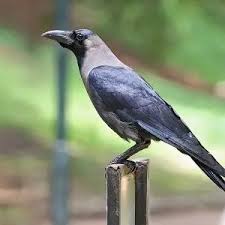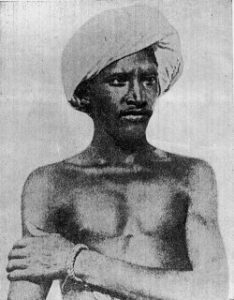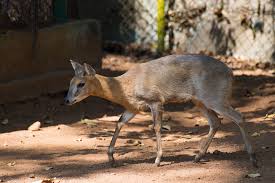Today’s Current Affairs: 12th June 2024 for UPSC IAS exams, State PSC exams, SSC CGL, State SSC, RRB, Railways, Banking Exam & IBPS, etc
Table of Contents
Hunar se Rozgar Scheme:

The Ministry of Tourism has been implementing the Hunar se Rozgar Scheme (skill to employment) since 2006 and it needs to relaxation in bureaucratic norms to boost participation.
- Hunar se Rozgar Scheme has significant potential to skill and employ youth in the tourism sector.
- The primary goal of the scheme is to offer short-term vocational training to non-literate, semi-literate, and educated unemployed youth aged 18-28 years to improve their skills and employability.
- It enables less-educated youth to pursue formal employment after brief training.
- This scheme gives economic importance to tourism and the potential to promote cultural heritage.
- The scheme primarily attracts participants from northern states.
Southern Cryonics:

Southern Cryonics (a company in Australia) announced that it has successfully frozen its first client, with the hope of bringing him back to life in the future.
- The first patient was an 80-year-old man, who died in May 2024 at a hospital in Sydney.
- Cryonics involves keeping the human body at cryogenic temperatures (-196°C) in the hopes that one day, medical science will be able to repair the molecular damage caused by ageing and disease and bring the patient back to full health.
- The process involves initially cooling the man’s body to 6 degrees Celsius with ice, using a heart-lung bypass machine to circulate a preserving solution and lower the temperature.
- Further, the body is wrapped in a special sleeping bag and packed in dry ice to reach -80 degrees Celsius, and then gradually lowering the temperature to -200 degrees Celsius in a cooling chamber before placing in a pod and storing it upside down in a specialised tank.
- However, the concern lies in the scientific and ethical aspects of reviving a whole human body, along with the extended timeframe required for such advancements.
Global Debt Crisis : UN Report

A report released by the UN Trade and Development (UNCTAD) titled “A World of Debt 2024: A Growing Burden to Global Prosperity,” has revealed an unprecedented global debt crisis in the world.
- Approximately 3.3 billion people currently live in countries where the payment of interest on debts surpasses the expenditure on either education or health.
Highlights of the Report:
- Institute of International Finance (a global association of financial institutions) has estimated that global debt (including borrowings of households, businesses and governments) has reached USD 315 trillion in 2024, which is 3 times the global Gross Domestic Product (GDP).
- Global public debt is rising rapidly, due to a combination of recent crises (such as Covid-19, rising food and energy prices, climate change, etc.) and a sluggish global economy (slowing growth of economy, rising bank interest rates etc).
- Net interest payments on public debt reached USD 847 billion in 2023 in developing countries, a 26% increase compared to 2021.
- Public debt in developing countries is rising at twice the rate of that in developed countries.
- It reached USD 29 trillion (30% of the global total) in 2023, increasing from 16% in 2010.
- Africa’s debt burden is growing faster than its economy leading to a rise in the debt-to-GDP ratio.
- The number of African countries with debt-to-GDP ratios above 60% has increased from 6 to 27 between 2013 and 2023.
- This is due to unforeseen global issues impacting their expansion and reduced domestic income as a result of a slow economy.
- Roughly 50% of developing countries are now dedicating a minimum of 8% of their government revenues to servicing their debts, a number that has increased twofold in the last ten years.
- Currently, developing nations are spending a greater portion of their GDP on paying off interest (2.4%) than on climate efforts (2.1%).
- Their ability to address climate change is being constrained by debt. In order to meet the targets of the Paris Agreement, there is a requirement to raise climate investments to 6.9% by 2030.
- ODA is government aid aimed at promoting economic development and welfare in developing countries.
Agnipath Scheme : Update

The ruling-party government’s ambitious Agnipath scheme, announced in June 2022, has been facing opposition from various political parties and Armed Forces veterans.
- Ongoing concerns highlight the scheme’s impact on military recruitment and the welfare of soldiers.
- The term “Agniveer” translates to “Fire-Warriors” and is a new military rank.
- It is a scheme of recruiting army personnel below officer ranks such as soldiers, airmen, and sailors who are not commissioned officers to the Indian Armed Forces.
- They are recruited for a period of 4 years, after which, upto 25% of these recruits (called Agniveers), can join the services on a permanent commission (another 15 years), subject to merit and organisational requirements.
- At present, all sailors, airmen, and soldiers, except the technical cadre of the medical branch, are recruited to the services under this scheme.
- Candidates between the age of 17.5 years to 23 years are eligible to apply (the upper age limit was increased from 21).
- Girls under the given age limit are open for the agnipath entry, while there is no such reservation for women under this scheme.
- Pay & Benefits:
- Death on Duty: The family gets a combined sum of Rs 1 crore, which includes both the Seva Nidhi package and the soldier’s unserved salary.
- Disability: An Agniveer can receive compensation up to Rs 44 lakh depending on the severity of the disability. This amount is provided only if the disability is caused by or worsened due to military service.
- Pensions: Agniveers won’t receive a regular pension after their 4-year service, unlike soldiers in the traditional system.
- Only the 25% who get selected for permanent commission will be eligible for a pension.
Indian House Crows:

The Kenyan government has announced an action plan to eliminate a million Indian House Crows (Corvus splendens) by the end of 2024.
- This decision stems from the birds’ significant negative impact on local ecosystems and their nuisance to the public, particularly in the Kenyan coastal region.
- The Indian House Crow is described as an invasive alien species from India and parts of Asia, introduced to East Africa via shipping activities.
- The crows prey on endangered local bird species, destroy nests, and eat eggs and chicks, leading to a decline in indigenous bird populations.
- This decline disrupts the ecosystem, allowing pests and insects to proliferate, further harming the environment.
- A similar effort in Kenya over 20 years ago managed to reduce their numbers temporarily.
- An action plan to combat the crow menace includes mechanical and targeted methods for culling the birds, and use of licensed poison for population control.
Indian House Crows:
- Species: Corvus splendens
- Common names: Indian house crow, house crow, Indian crow, grey-necked crow, Ceylon crow, Colombo crow
- Family: Corvidae
- The nominate race of Corvus splendens (C. splendens) exists in India, Nepal and Bangladesh and has a grey neck collar.
- Conservation Status:
- IUCN Status: Least ConcernedWildlife Protection Act: Schedule II
17th PM-KISAN Instalment:

After being re-elected for a third term, Prime Minister Narendra Modi’s first act was to approve the 17th installment of the Pradhan Mantri Kisan Samman Nidhi (PM-KISAN) plan. By giving out about Rs 20,000 crore, this new payment is expected to help about 9.3 crore farmers.
- The PM-KISAN scheme, which started in February 2019 and went into force in December 2018, is meant to help all eligible farmers’ families across India by giving them money. Each qualified farmer gets ₹6,000 a year from the program.
- This money is given to people in need in three equal payments of ₹2,000 every four months. It is sent straight to their bank accounts.
- The main purpose of the PM-Kisan plan is to help farmers get the money they need to buy farming supplies and take care of their own needs.
- The plan aims to improve the lives and potential productivity of farmers all over India by giving them direct income support.
Aditya-L1 Spacecraft : Image

The Aditya-L1 spacecraft started its trip toward the Sun on September 2, 2023.
- It was India’s first mission to study the sun. The Lagrangian point L1 was successfully reached on January 6, 2024, just 127 days after launch.
- It is in a key location about 1.5 million kilometers from Earth.
- The location at L1 is very important because it gives the spacecraft a clear view of the Sun, which makes monitoring the Sun easier all the time.
- Two important tools that Aditya-L1 has are the Solar Ultra Violet Imaging Telescope (SUIT) and the Visible Emission Line Coronagraph (VELC).
- These tools are very important for recording and studying things that happen in the sun. In May 2024, there was an unusually long time of high solar activity.
- During this time, the spacecraft picked up a lot of X- and M-class solar flares coming from AR13664, an active region on the Sun. Coronal Mass Ejections (CMEs) were linked to these flares, which happened mostly around May 8 and 9.
- On May 11, Earth was hit by a big geomagnetic storm caused by solar flares and following CMEs.
- Because these kinds of storms can affect power lines and satellite communications, studying them is very important for coming up with ways to protect technology infrastructure.
Aditya-L1 spacecraft:
- India’s first dedicated scientific mission to study the Sun, launched by the Indian Space Research Organisation (ISRO).
- The spacecraft is designed to observe the solar atmosphere, including the photosphere, chromosphere, and the outermost layers of the Sun.
- The mission is named after the Hindu Sun god, Aditya.
Birsa Munda : Death Anniversary

The Jharkhand Governor and Chief Minister recently paid tribute to tribal icon Birsa Munda on his death anniversary.
- Birsa Munda was a folk hero and a tribal freedom fighter who played a pivotal role in the Indian independence movement, particularly in the tribal regions of British India.
- He belonged to the Munda tribe in the Chota Nagpur Plateau area.
- He spearheaded an Indian tribal mass movement that arose in the Bihar and Jharkhand belts in the early 19th century under British colonisation.
- Munda rallied the tribals to fight against the forceful land grabbing carried out by the British government, which would turn the tribals into bonded labourers and force them to abject poverty.
- He influenced his people to realise the importance of owning their land and asserting their rights over it.
- Birsa encouraged the tribe to stick to their traditions and get back to their tribal roots.
- One of Birsa’s notable contributions was the formation of the Munda Rebellion, also known as the Ulgulan, or the Tamar Revolt, in the late 19th century.
- He founded the faith of Birsait, a blend of animism and indigenous beliefs, which emphasized the worship of a single god.
- He became their leader and was given the nickname, ‘Dharti Aba’ or the father of the earth.
- He died on June 9, 1900, at age 25.
- In recognition of his impact on the national movement, the state of Jharkhand was created on his birth anniversary in 2000.
- November 15, the birth anniversary of Birsa Munda, was declared ‘Janjatiya Gaurav Divas by the Central Government in 2021.
Four-Horned Antelope:

A rare four-horned antelope has been sighted for the first time in Veerangana Durgavati Tiger Reserve (Sagar district), which was earlier known as Nauradehi Sanctuary.
- Four-Horned Antelope also called Chousingha, is a small bovid antelope.
- They are the smallest antelopes found in Asia.
- Scientific Name: Tetracerus quadricornis
- It is endemic to India and Nepal.
- In India, they range from the foothills of the Himalayas in the north to the Deccan Plateau in the south.
- They mostly occur in open, dry, deciduous forests in hilly terrain.
- They inhabit areas with significant cover from grasses or heavy undergrowth, and close to water bodies.
- They have a yellowish-brown to reddish coat and are slender, with small legs and a short tail.
- These antelopes have four horns, which distinguish them from most other bovids, which have two horns.
- Only males in this species grow horns. One pair of horns is located between the ears, and the other on the forehead.
- They are usually diurnal and solitary by nature; however, can be spotted in loose groups of three to four.
- Conservation Status: IUCN Red List: Vulnerable
AIM – ICDK Water Challenge 4.0

Atal Innovation Mission, NITI Aayog (AIM) announced the launch of two groundbreaking initiatives aimed at fostering innovation and sustainability in India: the ‘AIM – ICDK Water Challenge 4.0’ and the fifth edition of ‘Innovations for You’ handbook, spotlighting SDG entrepreneurs of India.
- The AIM – ICDK Water Challenge 4.0 is an initiative launched by the Atal Innovation Mission (AIM) under NITI Aayog to address critical water-related challenges through inventive solutions.
- The challenge is a collaborative effort with the Innovation Centre Denmark (ICDK) at the Royal Danish Embassy in India.
- Objectives:
- Address water challenges: To address critical water-related challenges through innovative solutions.
- Global participation: The selected teams from India will participate in the global Next Generation Digital Action program, engaging with young talents from leading universities and innovation hubs in nine countries (India, Denmark, Ghana, Kenya, Korea, Tanzania, South Africa, Ghana, Colombia, and Mexico).
- Focus on sustainability: The program emphasizes sustainability, digital solutions, inclusion, and universal design principles.
- Showcase innovations: Participants will be able to showcase their innovations at the Digital Tech Summit in Copenhagen from October 30th to 31st, 2024, funded by the Government of Denmark.
- Two Tracks: The challenge invites entries under two tracks: one for students and the other for young entrepreneurs under the age of 35, including early-stage startups, researchers, and young innovators committed to driving positive environmental change.




